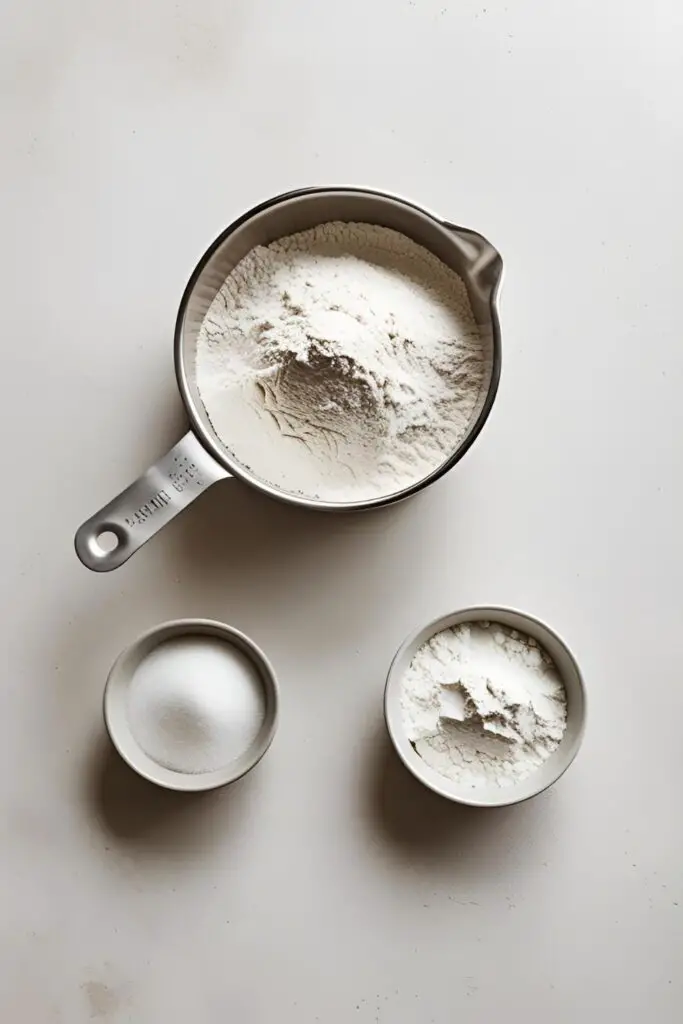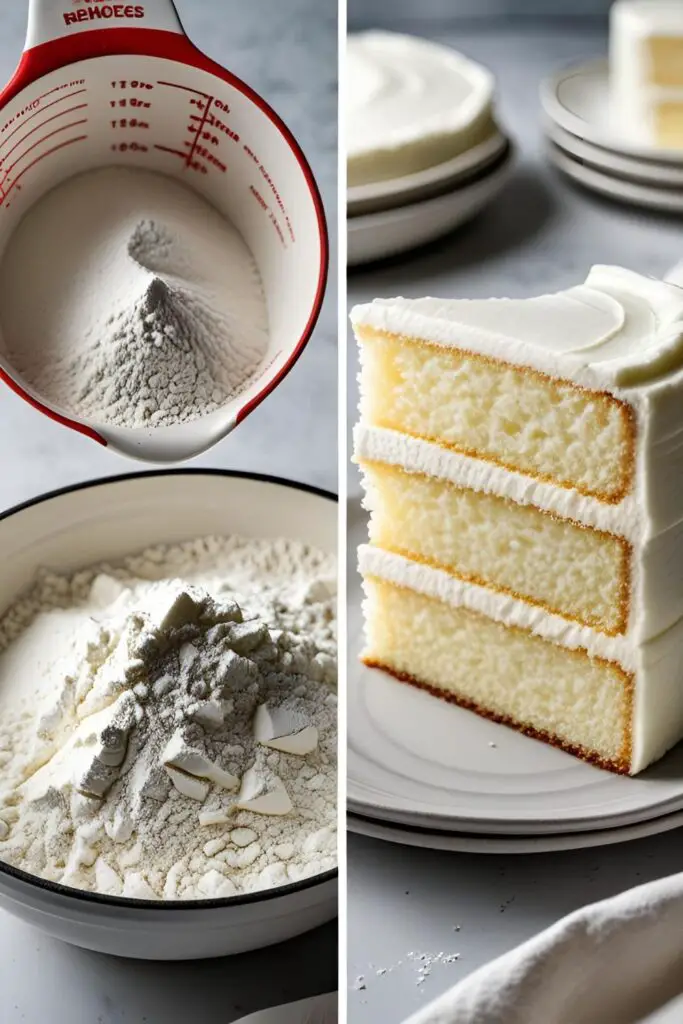How to Make Cake Flour at Home (The Ultimate 2-Ingredient Hack!)
Picture this: It’s 9 PM. You’re decked out in your favorite apron, your stand mixer is humming, and you’re halfway through a recipe for the most angelic, tender, cloud-like vanilla cake imaginable. You scan the next line of the instructions and your heart stops. It reads: “2 cups of cake flour.” You stare into your pantry, a desolate wasteland of half-empty bags of all-purpose flour and a rogue bag of bread flour from that one time you tried to make sourdough. Your cake dreams, dashed.
But what if I told you that you’re not out of cake flour? What if I told you that you’ve had it this whole time, just in disguise? Today, my friend, you are going to learn how to make cake flour with two ridiculously simple pantry staples. You are about to unlock a baking superpower that will save you money, a trip to the store, and your cake-loving soul.
Why This Baking Hack Is Absolutely Awesome
So, why should you care about this little kitchen trick? Is it really that big of a deal? Oh, yes. Yes, it is.
First and foremost, it will save you money and a last-minute grocery run. Let’s be honest, cake flour is one of those ingredients you buy for one specific recipe, and then the box languishes in your pantry for two years until it expires. This hack uses what you almost certainly already have on hand: all-purpose flour and cornstarch. It’s resourceful, it’s convenient, and it’s basically free.
Second, it unlocks the secret to truly tender cakes. This isn’t just about replacing an ingredient; it’s about understanding why it works. Learning this trick will teach you the fundamentals of how flour affects your baking, instantly making you a smarter, more intuitive baker. Your cakes will have a finer, softer, more delicate crumb, and you’ll know exactly why.
Finally, it just makes you feel like a kitchen wizard. Being able to conjure up a specialty ingredient on demand? That’s some next-level kitchen badassery. You’ll never be thwarted by a fancy recipe again.
The (Hilariously Short) Ingredients List
Prepare to be amazed by the simplicity. To make one cup of cake flour, you will need exactly two things.
- All-Purpose Flour: 1 cup.
- Cornstarch: 2 tablespoons.
That’s it. That’s the whole list. I know, right?
The Tools for This Kitchen Alchemy
You don’t need a laboratory, but a couple of basic tools are absolutely essential for this to work properly.
- Measuring Cups and Spoons: Precision is key here.
- A Flour Sifter or a Fine-Mesh Sieve: This is 100% non-negotiable. This tool is the real hero of our story.
- A Whisk: For giving everything a final fluff.
- A Mixing Bowl: To contain the magic.
Step-by-Step: The Two-Step Path to Tender Cakes
This process is deceptively simple, but you have to follow the steps exactly. The magic is in the method.
Step 1: The Measure and Swap
First, we need to measure our all-purpose flour correctly. Don’t just scoop it out of the bag with your measuring cup! This compacts the flour and gives you way too much. Instead, use a spoon to fluff up the flour in its container, then spoon it into your 1-cup measuring cup until it’s overflowing. Use the back of a knife to level it off perfectly flat.
Now, take that perfectly measured cup of flour and remove 2 level tablespoons of it. Just scoop them out and put them back in your flour bag.
Step 2: The Cornstarch Addition
You now have a measuring cup containing 1 cup minus 2 tablespoons of all-purpose flour. To this, add 2 level tablespoons of cornstarch. You have now replaced the flour you removed with cornstarch.
Step 3: The Sifting Ceremony (THE MOST IMPORTANT STEP)
This is where the real magic happens. If you just stir this mixture with a fork, you will have a sad, lumpy mess and your cake will be a disaster. You need to combine and aerate this mixture thoroughly.
Pour your flour-cornstarch concoction into a flour sifter or a fine-mesh sieve set over a bowl. Sift the entire mixture through. Now, do it again. Dump the sifted mixture back into the sifter and sift it a second time.
Feeling extra? Want to guarantee a perfect, airy, cloud-like cake? Sift it a third time. I’m not kidding. This repeated sifting is what thoroughly combines the two ingredients and aerates the mixture, giving it the light, delicate texture of real cake flour.
That’s it. You now have 1 cup of homemade cake flour ready to use in your recipe.
The Science Corner: Why This Actually Works
“Okay,” you’re thinking, “but what did I just do?” You just played with protein!
- It’s All About Protein Content: The main difference between various types of flour is their protein content. Bread flour has a high protein content (12-14%), which is perfect for developing strong gluten strands for chewy bread. All-purpose flour is in the middle (10-12%).
- Cake Flour is a Low-Protein Hero: Real cake flour has a very low protein content (7-9%). Less protein means less gluten formation, which is the secret to a soft, tender, fine-crumbed cake that melts in your mouth.
- Cornstarch, the Protein Diluter: Cornstarch is a pure starch with zero protein. By removing a portion of the higher-protein all-purpose flour and replacing it with zero-protein cornstarch, you are effectively lowering the overall protein percentage of your mixture. This brings it down into the range of commercial cake flour.
- Sifting is Aeration: The repeated sifting mimics the ultra-fine milling process of commercial cake flour, making your homemade version light and airy.
Common Mistakes to Avoid (Don’t Sabotage Your Cake!)
This hack is simple, but there are a few ways to mess it up. Don’t be that person.
- THE SIN OF NOT SIFTING. I’m putting this in all caps because it’s that important. If you skip the sifting, you will have pockets of cornstarch and pockets of flour in your batter. Your cake will be dense, tough, and might even have a weird, starchy taste in spots. You must sift, preferably multiple times.
- Inaccurate Measuring. If you scoop your flour directly with the measuring cup, you’ll start with too much flour. Then you’ll remove 2 tablespoons, but your starting measurement was already wrong. This will throw off the entire ratio and lead to a drier cake. Spoon and level your flour!
- Using Self-Rising Flour. Oh, please don’t do this. Self-rising flour is all-purpose flour that already has baking powder and salt mixed into it. Using it for this hack will result in a cake with a bizarre flavor and a texture that might just explode out of the pan. Stick to all-purpose flour.
Using Your Homemade Cake Flour
Now that you have this superpower, where can you use it?
- The Perfect Vanilla or White Cake: This is where your homemade cake flour will shine the brightest. It’s ideal for recipes that are meant to be light, airy, and delicate, like classic birthday cakes, angel food cakes, or chiffon cakes.
- Tender Chocolate Cakes: It works beautifully in chocolate cakes, too! It will help create a super soft, moist crumb. Because cocoa powder is also a fine powder, the textural difference might be slightly less dramatic than in a vanilla cake, but it’s still a fantastic upgrade.
- Soft & Fluffy Cupcakes: Want your cupcakes to have that perfect, bakery-style soft crumb? Use your homemade cake flour. They will be noticeably more tender than their all-purpose flour counterparts.
Your Burning Flour Questions, Answered
Let’s clear up some of the most common questions about this kitchen hack.
What is the actual difference between cake flour and all-purpose flour?
The biggest difference is protein content. Cake flour has a lower protein content (7-9%) than all-purpose flour (10-12%). This means cake flour develops less gluten, resulting in a softer, more tender baked good. Cake flour is also milled to be extra fine and is usually bleached, which also contributes to its soft texture.
Do I really have to sift it? And why so many times?
Yes, you really do. Sifting does two crucial things: it thoroughly combines the cornstarch and flour into a homogenous mixture, and it aerates the flour, making it light and fluffy. Sifting multiple times ensures a perfect blend and the lightest possible texture, which is exactly what you want from cake flour.
Can I make a big batch of this to store for later?
Absolutely! This is a great idea. To make a big batch, just use the same ratio. For example, start with 7 cups of all-purpose flour, remove 14 tablespoons (which is ⅞ cup), and replace it with 14 tablespoons (⅞ cup) of cornstarch. Sift it all together at least 3-4 times, then store it in an airtight container. Label it clearly!
Can I use arrowroot starch or tapioca starch instead of cornstarch?
Yes, in most cases, arrowroot or tapioca starch can be used as a 1:1 substitute for cornstarch in this hack. They are also fine starches that will help lower the protein content and create a tender texture.
Will this substitute work in a bread recipe?
NO. Absolutely not. Bread recipes rely on the high protein content of bread flour (or even all-purpose flour) to develop strong gluten strands. Using this low-protein substitute would result in a sad, dense loaf that doesn’t rise properly.
Is homemade cake flour exactly the same as store-bought?
It is an extremely effective and close substitute that will give you fantastic results. However, commercial cake flour is milled to an ultra-fine consistency that’s hard to replicate at home. For 99% of your baking needs, this homemade version will be perfect. For extremely delicate and finicky recipes like a competitive angel food cake, the store-bought version might have a slight edge.
Why do I have to remove flour before adding the cornstarch?
You do this to keep the total volume of your “flour” consistent. The goal is to end up with exactly 1 cup of your final product. If you started with 1 cup of flour and just added 2 tablespoons of cornstarch, you would have 1 cup plus 2 tablespoons of material, which would throw off your recipe’s dry-to-wet ingredient ratio.
Final Thoughts
Look at you. You are no longer a slave to the baking aisle. You are no longer at the mercy of a recipe that calls for a specialty ingredient you don’t have. You have just hacked your pantry, outsmarted the system, and armed yourself with the secret to tender, delicate cakes on demand.
This isn’t just a substitution; it’s a new level of baking freedom. Go forth with your newfound wisdom. Bake that angel food cake. Whip up those tender cupcakes. You are a resourceful, intelligent, unstoppable baker. Now go prove it.




